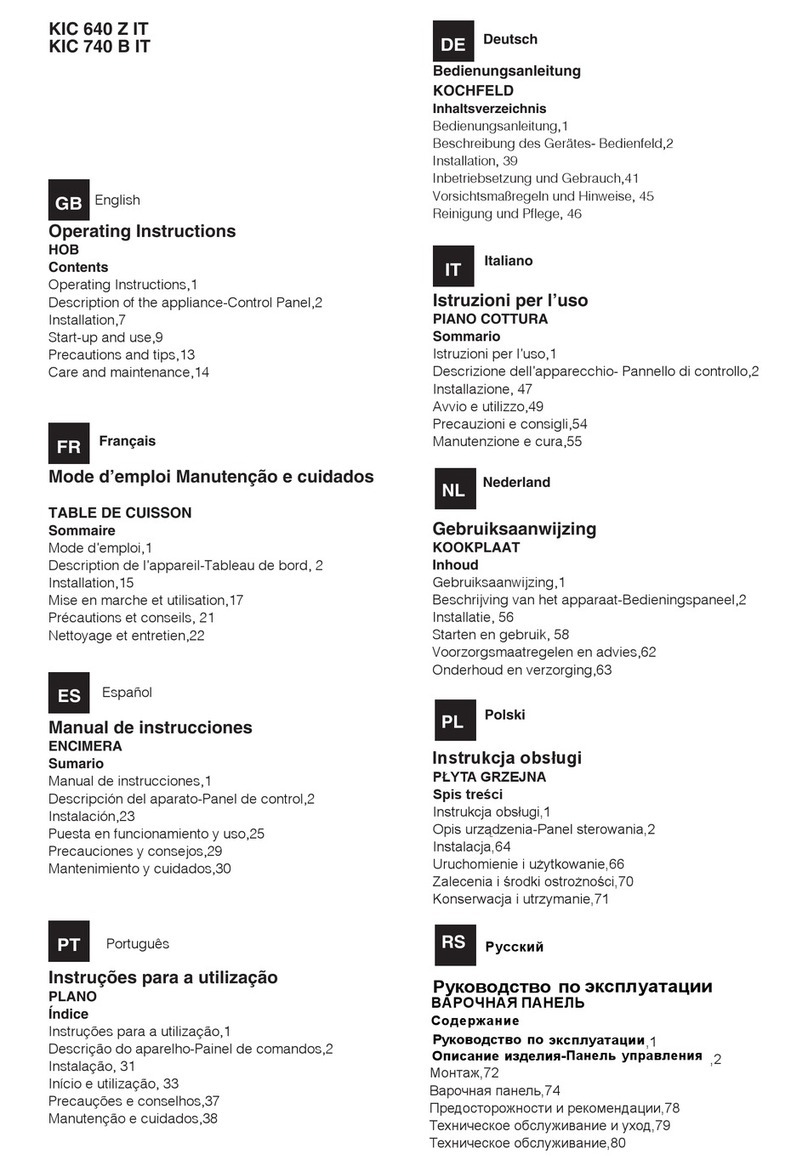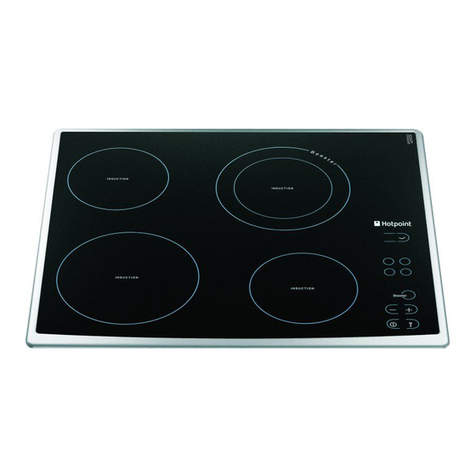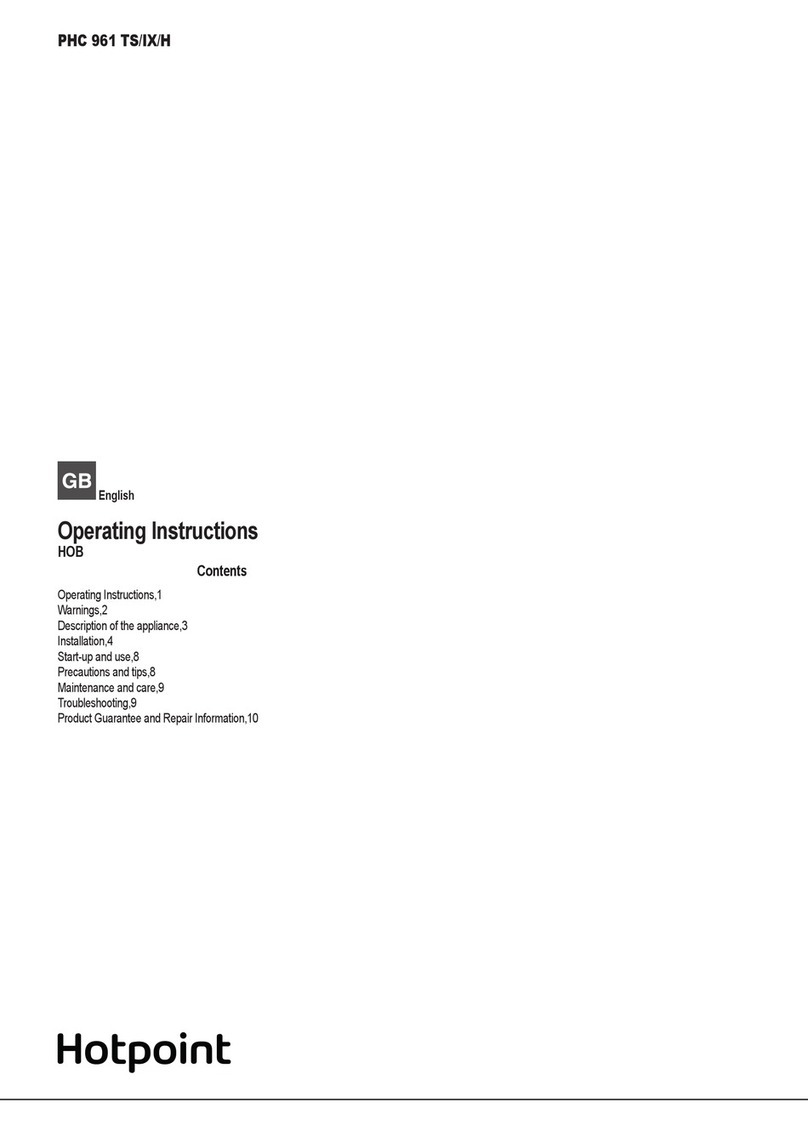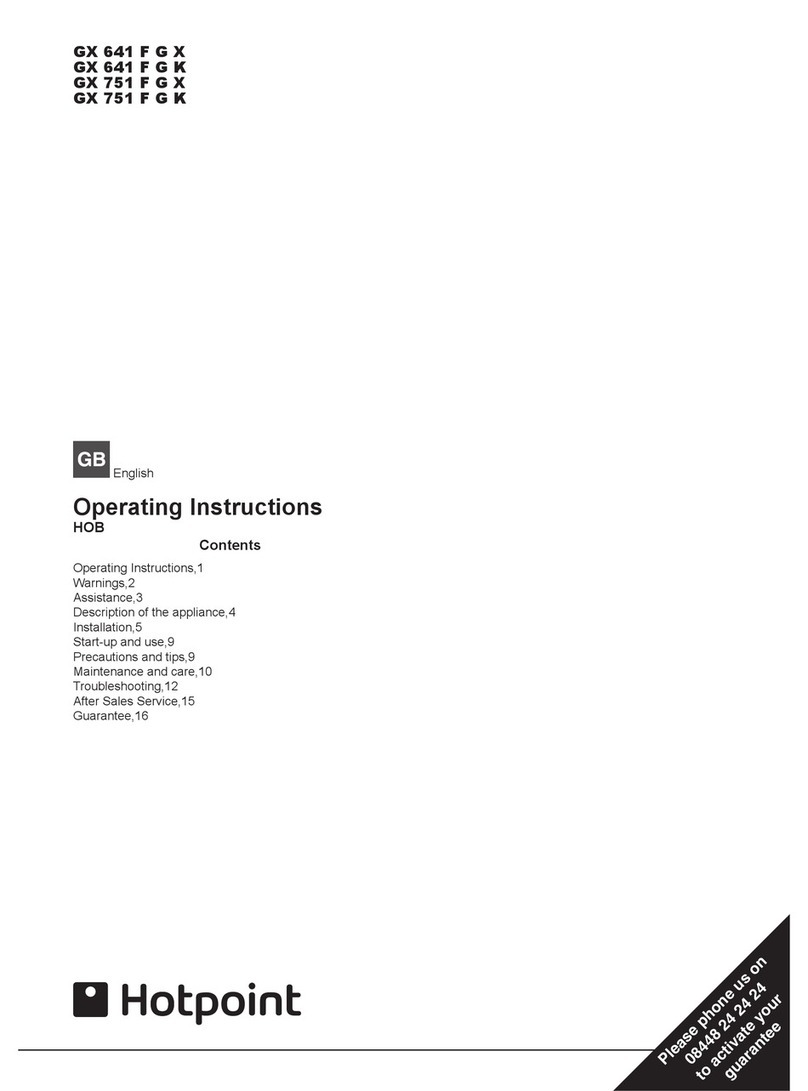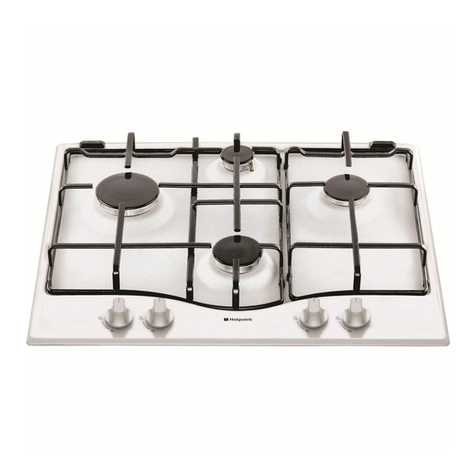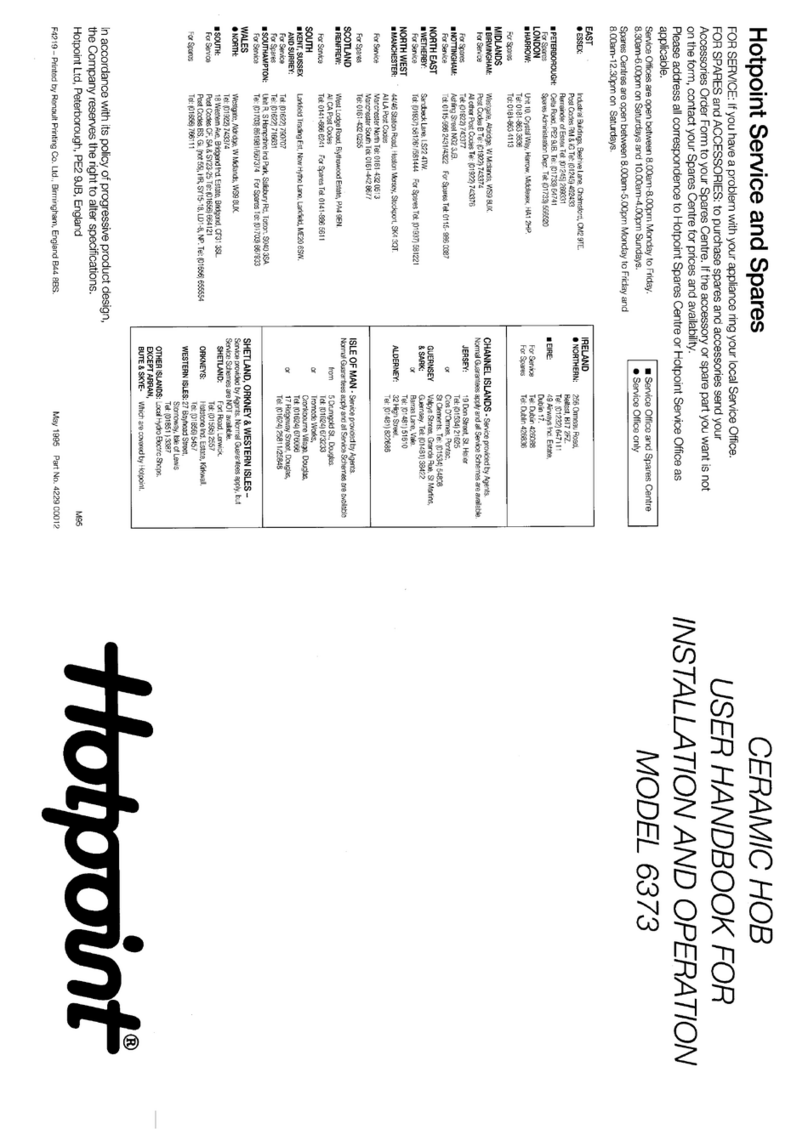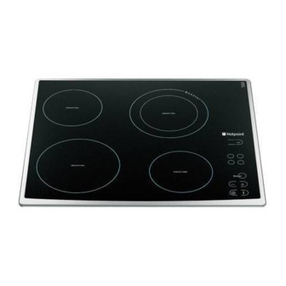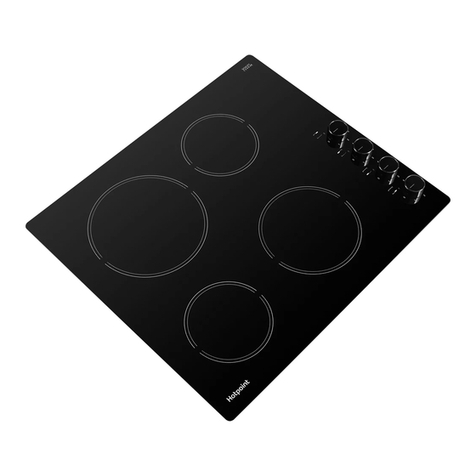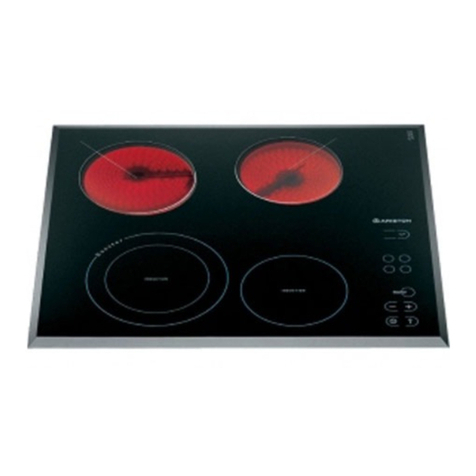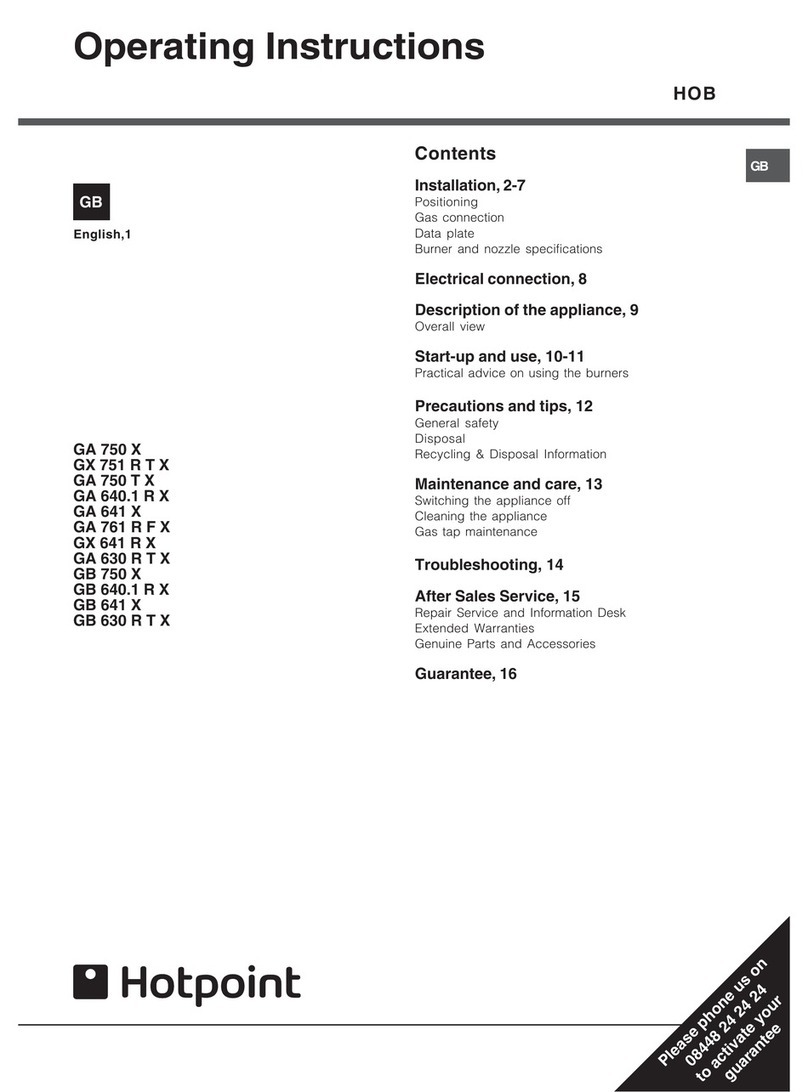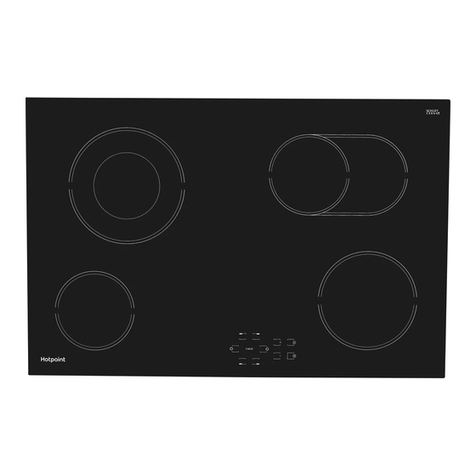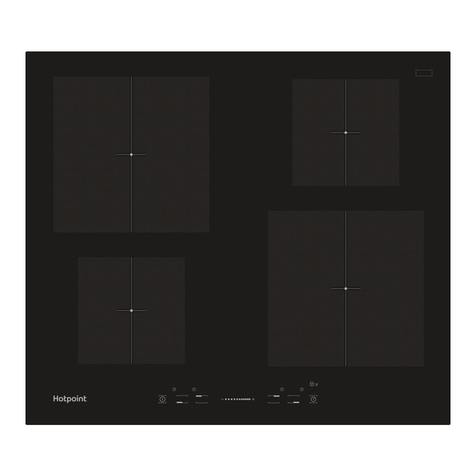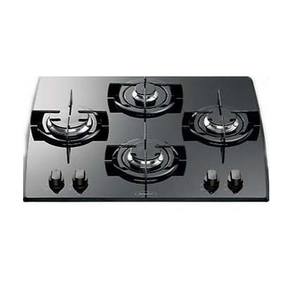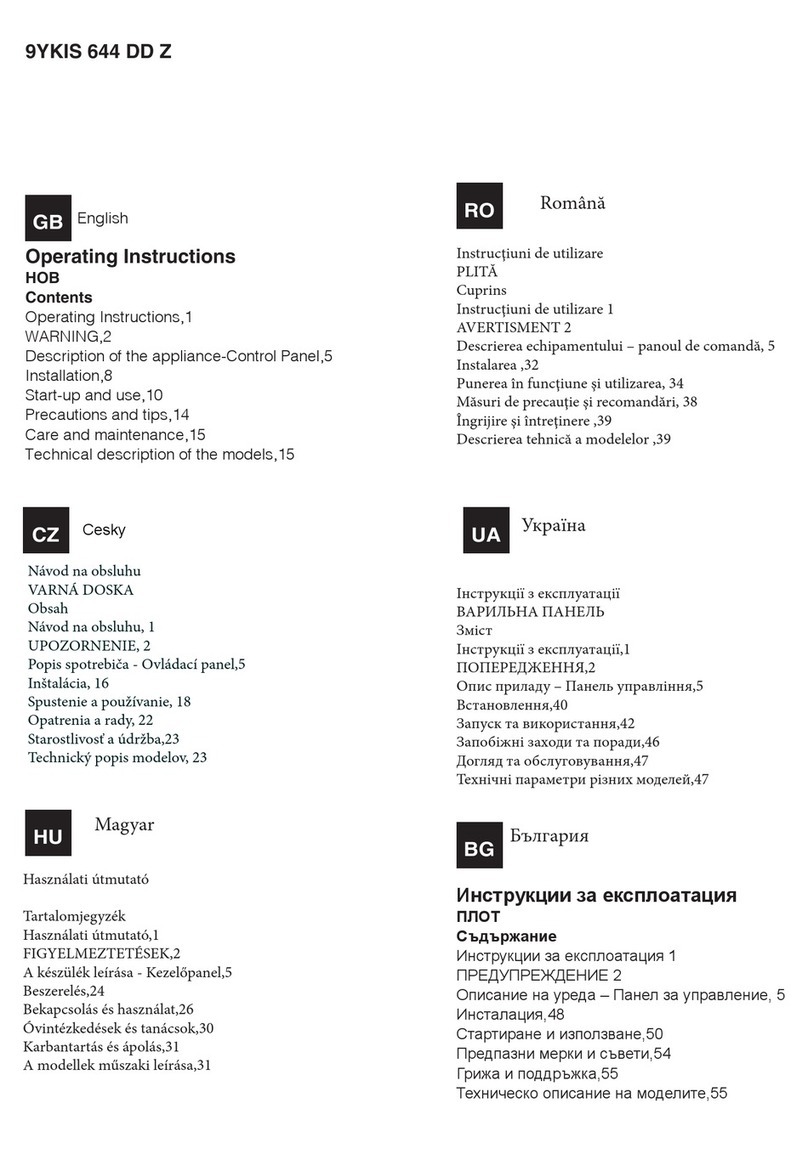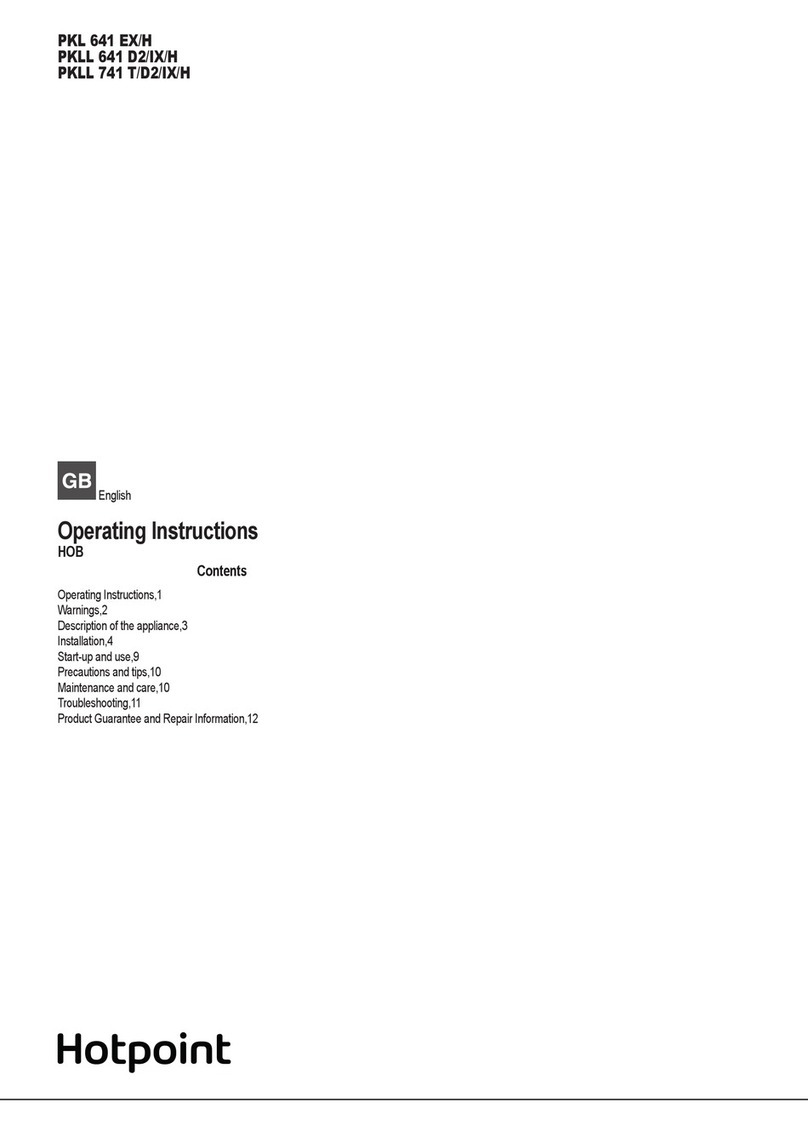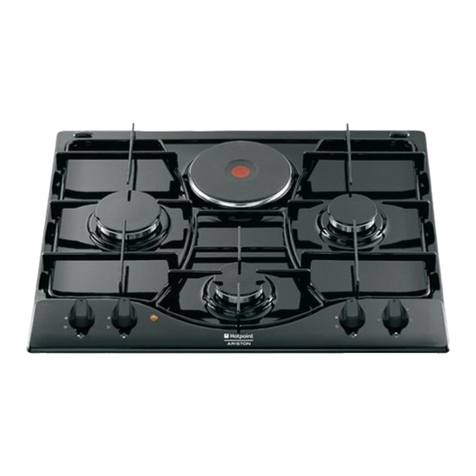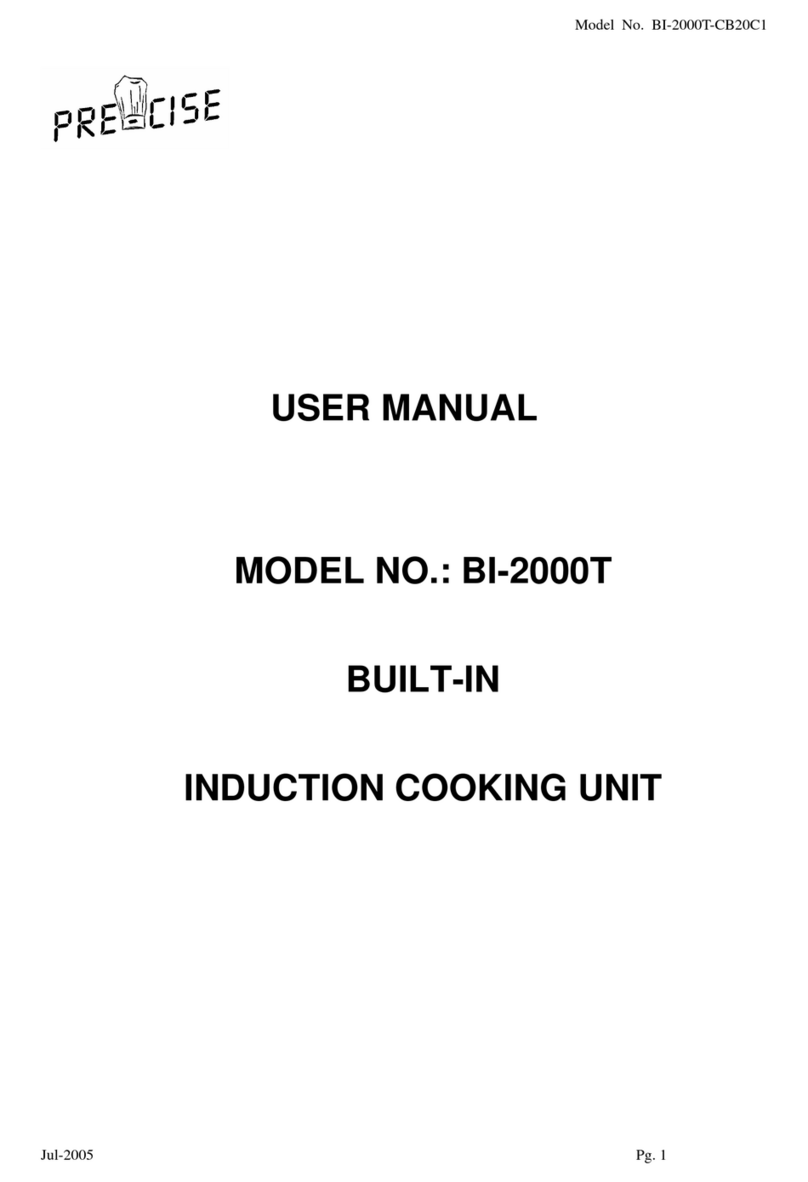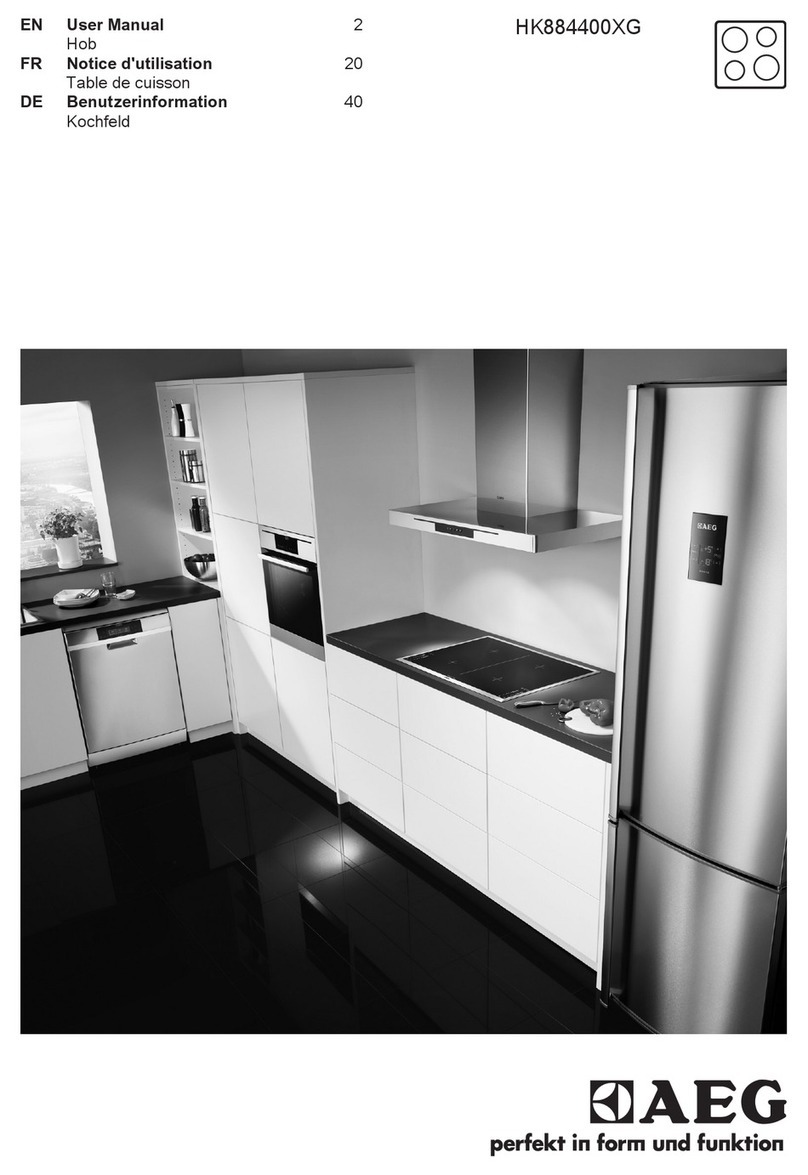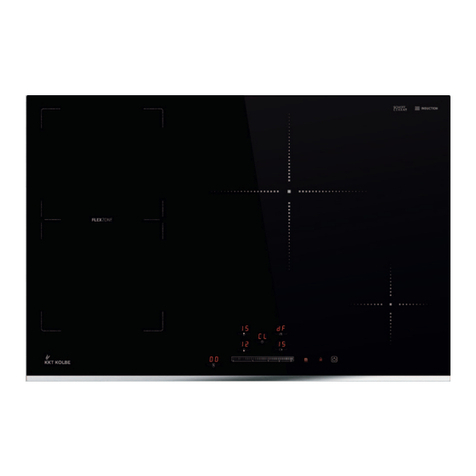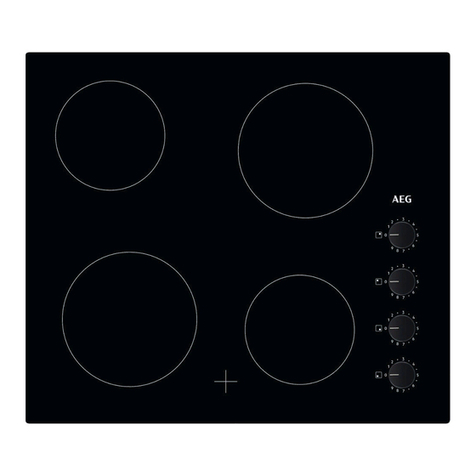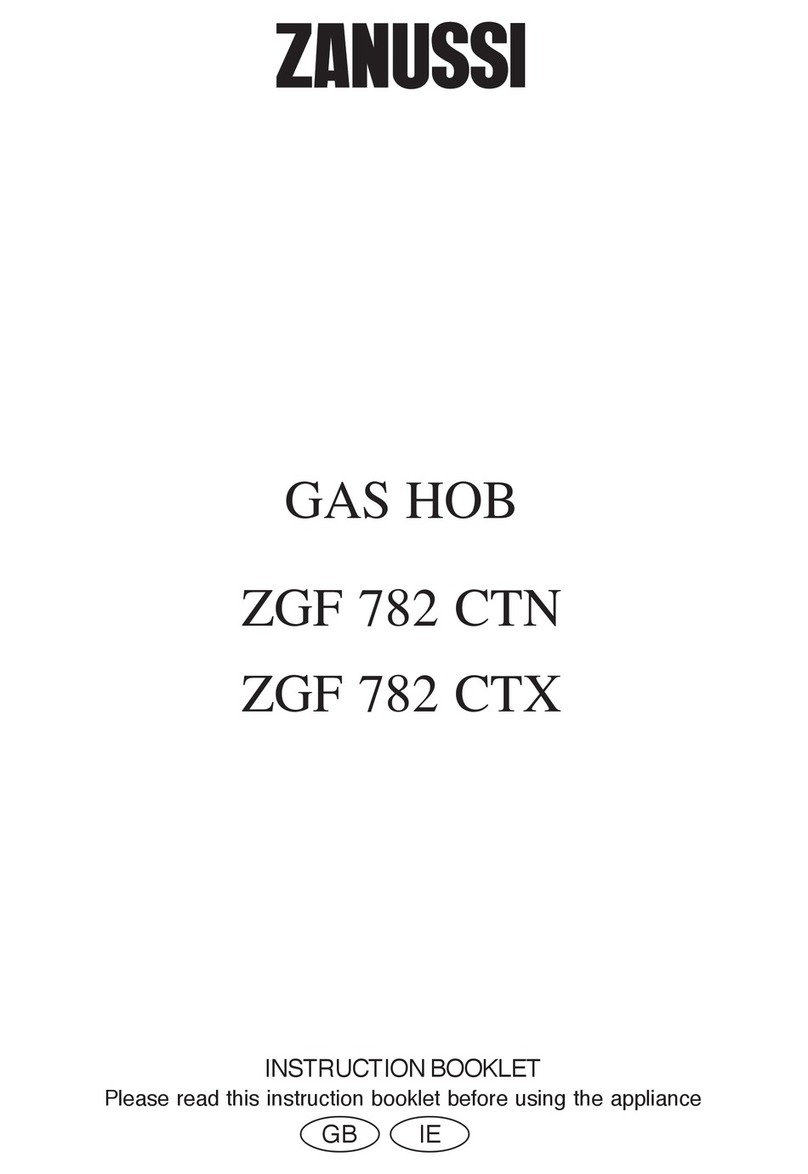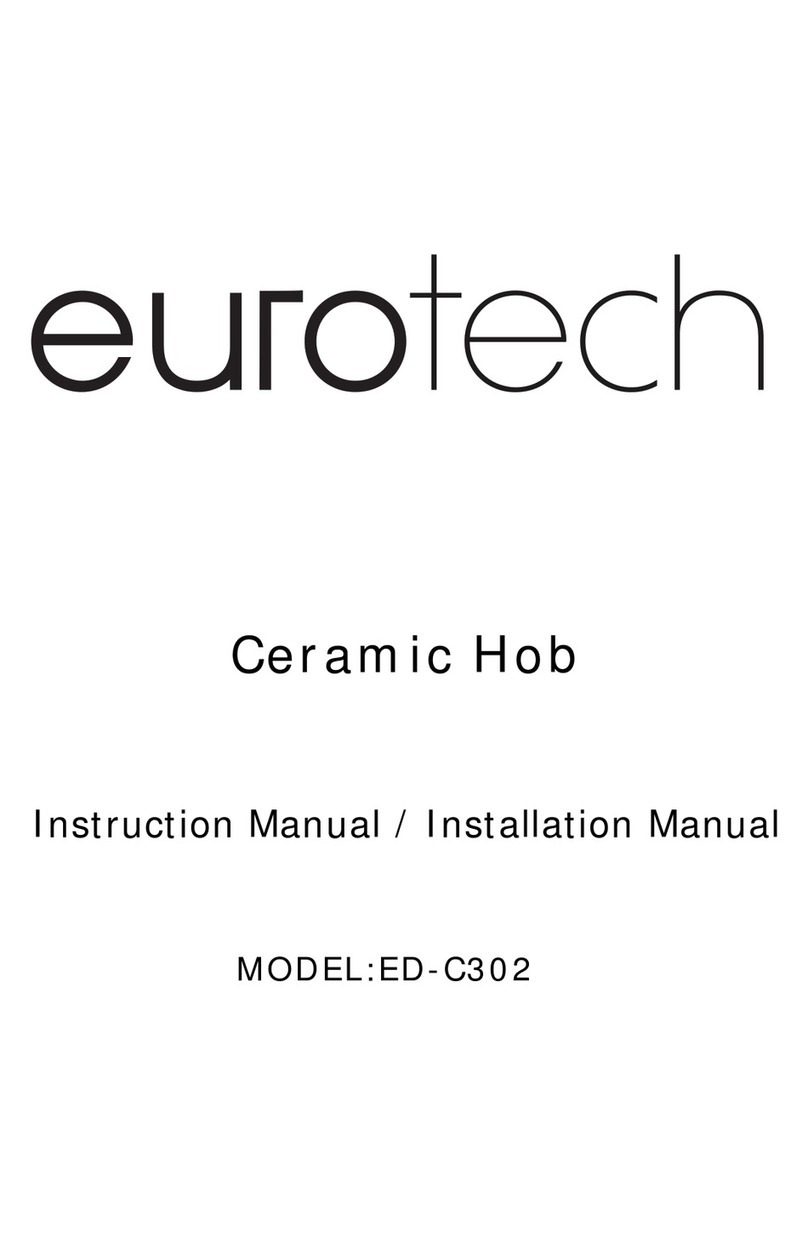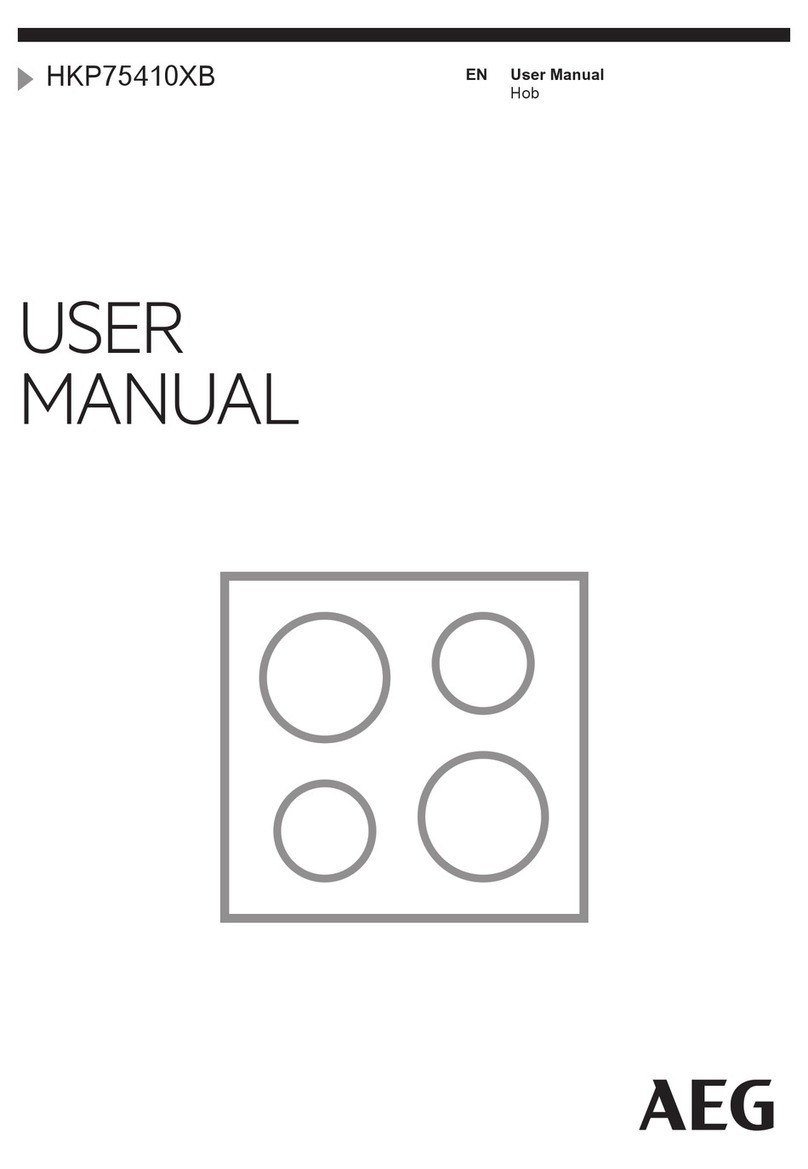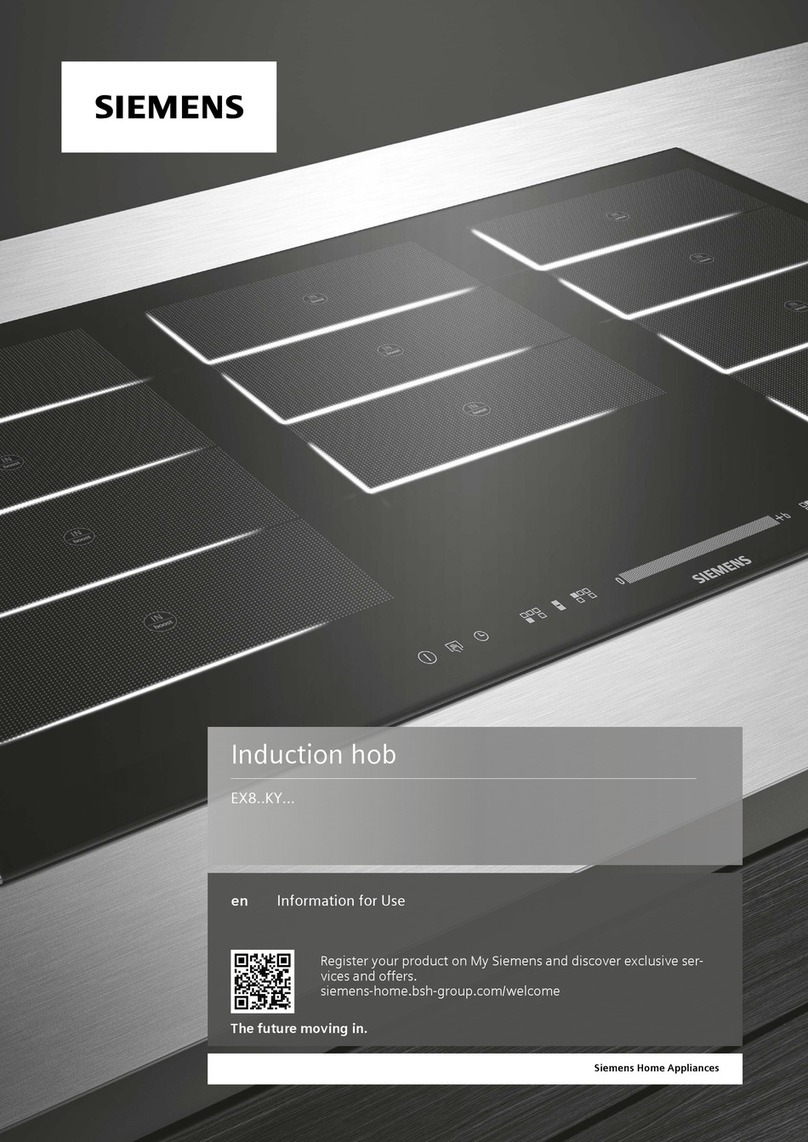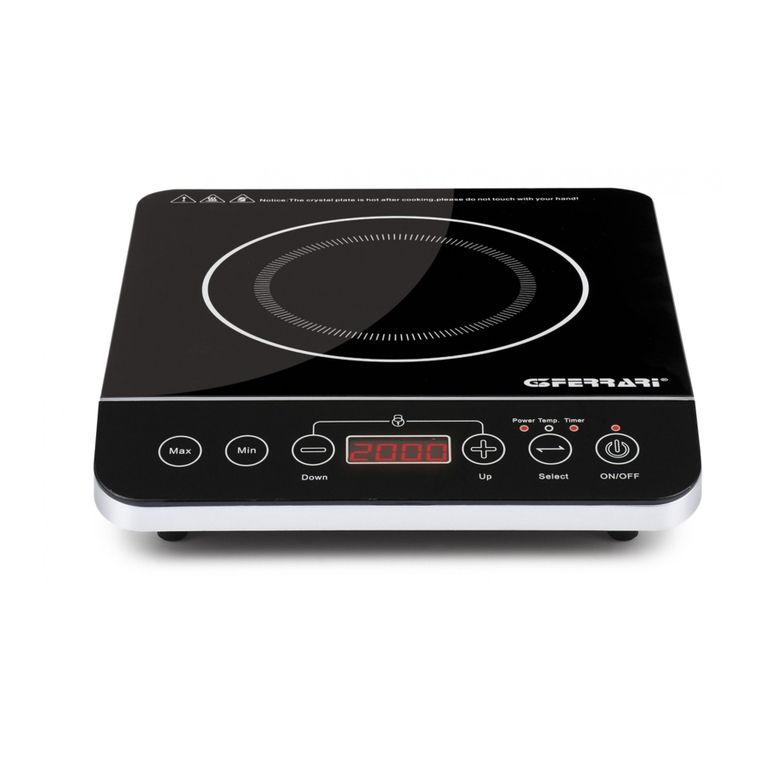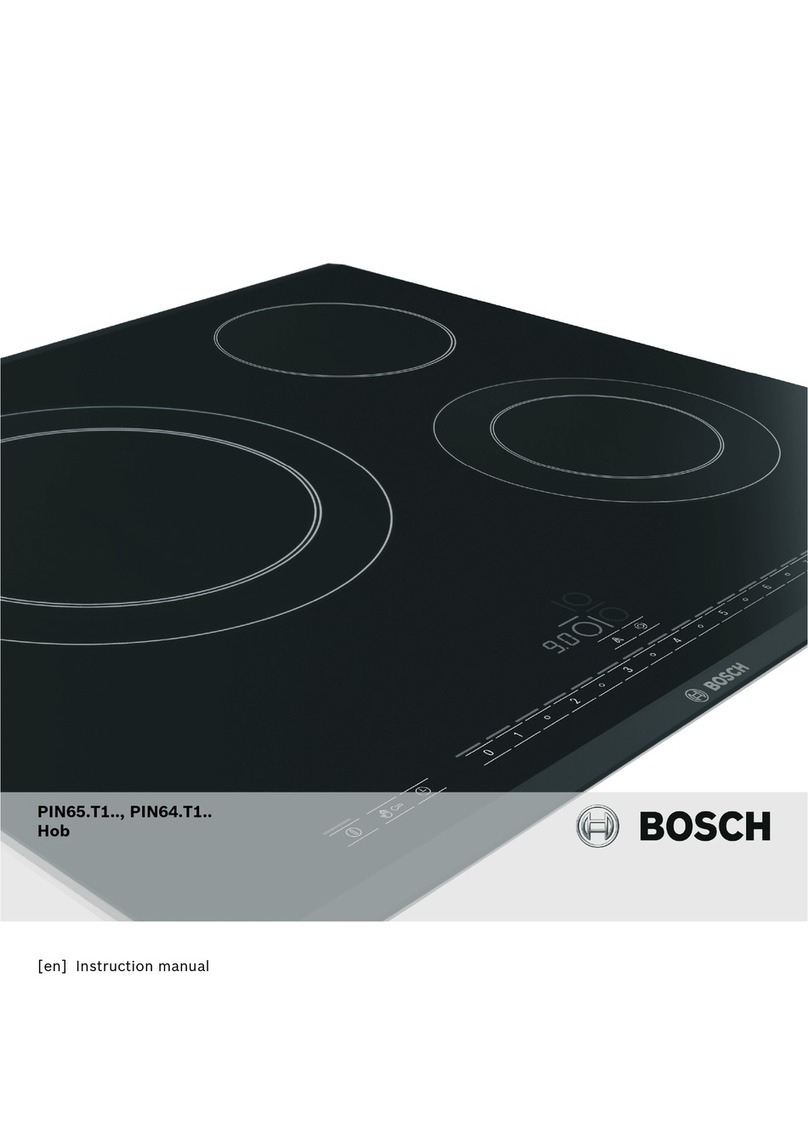GB
9
recautions and tips
This appliance has been designed and manufactured in
compliance with international safety standards. The
following warnings are provided for safety reasons and
must be read carefully.
General safety
This is a class 3 built-in appliance.
Gas appliances require regular air exchange to
maintain efficient operation. When installing the
hob, follow the instructions provided in the
paragraph on Positioning the appliance.
These instructions are only valid for the countries
whose symbols appear in the manual and on the
serial number plate.
The appliance was designed for domestic use inside
the home and is not intended for commercial or
industrial use.
The appliance must not be installed outdoors, even in
covered areas. It is extremely dangerous to leave the
appliance exposed to rain and storms.
Do not touch the appliance with bare feet or with wet or
damp hands and feet.
The appliance must be used by adults only, to cook
food according to the instructions in this manual.
Ensure that the power supply cables of other electrical
appliances do not come into contact with the hot parts
of the oven.
The openings used for ventilation and dispersion of
heat must never be covered.
Always make sure the knobs are in the l/¡ position
when the appliance is not in use.
When unplugging the appliance always pull the plug from
the mains socket, do not pull on the cable.
Never carry out any cleaning or maintenance work
without having detached the plug from the mains.
In case of malfunction, under no circumstances should
you attempt to repair the appliance yourself. Repairs
carried out by inexperienced persons may cause injury
or further malfunctioning of the appliance. Contact a
ervice Centre (see Assistance).
Always make sure that pan handles are turned towards
the centre of the hob in order to avoid accidental burns.
Do not close the glass cover (if present) when the gas
burners or electric hotplates are still hot.
Do not use unstable or deformed pans.
The appliance should not be operated by people
(including children) with reduced physical, sensory or
mental capacities, by inexperienced individuals or by
anyone who is not familiar with the product. These
individuals should, at the very least, be supervised by
someone who assumes responsibility for their safety or
receive preliminary instructions relating to the operation
of the appliance.
Dis osal
When disposing of packaging material: observe local
legislation so that the packaging may be reused.
The European Directive 2002/96/EC on Waste Electrical
and Electronic Equipment (WEEE), requires that old
household electrical appliances must not be disposed
of in the normal unsorted municipal waste stream. Old
appliances must be collected separately in order to
optimise the recovery and recycling of the materials
they contain and reduce the impact on human health
and the environment. The crossed out wheeled bin
symbol on the product reminds you of your obligation,
that when you dispose of the appliance it must be
separately collected.
Consumers may take their old appliance to public
waste collection areas, other communal collection
areas, or if national legislation allows return it to a
retailer when purchasing a similar new product.
All major household appliance manufacturers are active
in the creation of systems to manage the collection and
disposal of old appliances.
Recycling & Dis osal Information
As part of Hotpoint's continued commitment to helping
the environment, Hotpoint reserves the right to use quality
recycled components to keep down customer costs and
minimise material wastage.
Please dispose of packaging and old appliances
carefully.
To minimise risk of injury to children, remove the door,
plug and cut mains cable off flush with the appliance.
Dispose of these parts separately to ensure that the
appliance can no longer be plugged into a mains socket,
and the door cannot be locked shut.

